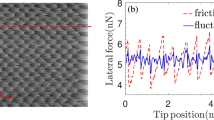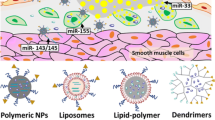
Overview
- Covers all aspects of heat transfer on the nanoscale
- Frictional drag and noncontact friction presented
- Comparison of theory and experiment given
- Reference for researchers and engineers
- Includes supplementary material: sn.pub/extras
Part of the book series: NanoScience and Technology (NANO)
Buy print copy
About this book
This book provides a general formalism for the calculation of the spectral correlation function for the fluctuating electromagnetic field. The procedure is applied to the radiative heat transfer and the van der Waals friction using both the semi-classical theory of the fluctuating electromagnetic field and quantum field theory. Applications of the radiative heat transfer and non-contact friction to scanning probe spectroscopy are presented. The theory gives a tentative explanation for the experimental non-contact friction data.
The book explains that radiative heat transfer and the van der Waals friction are largely enhanced at short separations between the bodies due to the evanescent electromagnetic waves. Particular strong enhancement occurs if the surfaces of the bodies can support localized surface modes like surface plasmons, surface polaritons or adsorbate vibrational modes. An electromagnetic field outside a moving body can also be created by static charges which are always present on the surface of the body due to inhomogeneities, or due to a bias voltage. This electromagnetic field produces electrostatic friction which can be significantly enhanced if on the surface of the body there is a 2D electron or hole system or an incommensurate adsorbed layer of ions exhibiting acoustic vibrations.
Similar content being viewed by others
Keywords
Table of contents (15 chapters)
-
Front Matter
-
Back Matter
Authors and Affiliations
Bibliographic Information
Book Title: Electromagnetic Fluctuations at the Nanoscale
Book Subtitle: Theory and Applications
Authors: Aleksandr I. Volokitin, Bo N.J. Persson
Series Title: NanoScience and Technology
DOI: https://doi.org/10.1007/978-3-662-53474-8
Publisher: Springer Berlin, Heidelberg
eBook Packages: Chemistry and Materials Science, Chemistry and Material Science (R0)
Copyright Information: Springer-Verlag Berlin Heidelberg 2017
Hardcover ISBN: 978-3-662-53473-1Published: 26 June 2017
Softcover ISBN: 978-3-662-58620-4Published: 09 December 2018
eBook ISBN: 978-3-662-53474-8Published: 09 June 2017
Series ISSN: 1434-4904
Series E-ISSN: 2197-7127
Edition Number: 1
Number of Pages: XIII, 425
Number of Illustrations: 32 b/w illustrations, 61 illustrations in colour
Topics: Nanotechnology, Engineering Thermodynamics, Heat and Mass Transfer, Nanotechnology and Microengineering, Thermodynamics, Characterization and Evaluation of Materials



